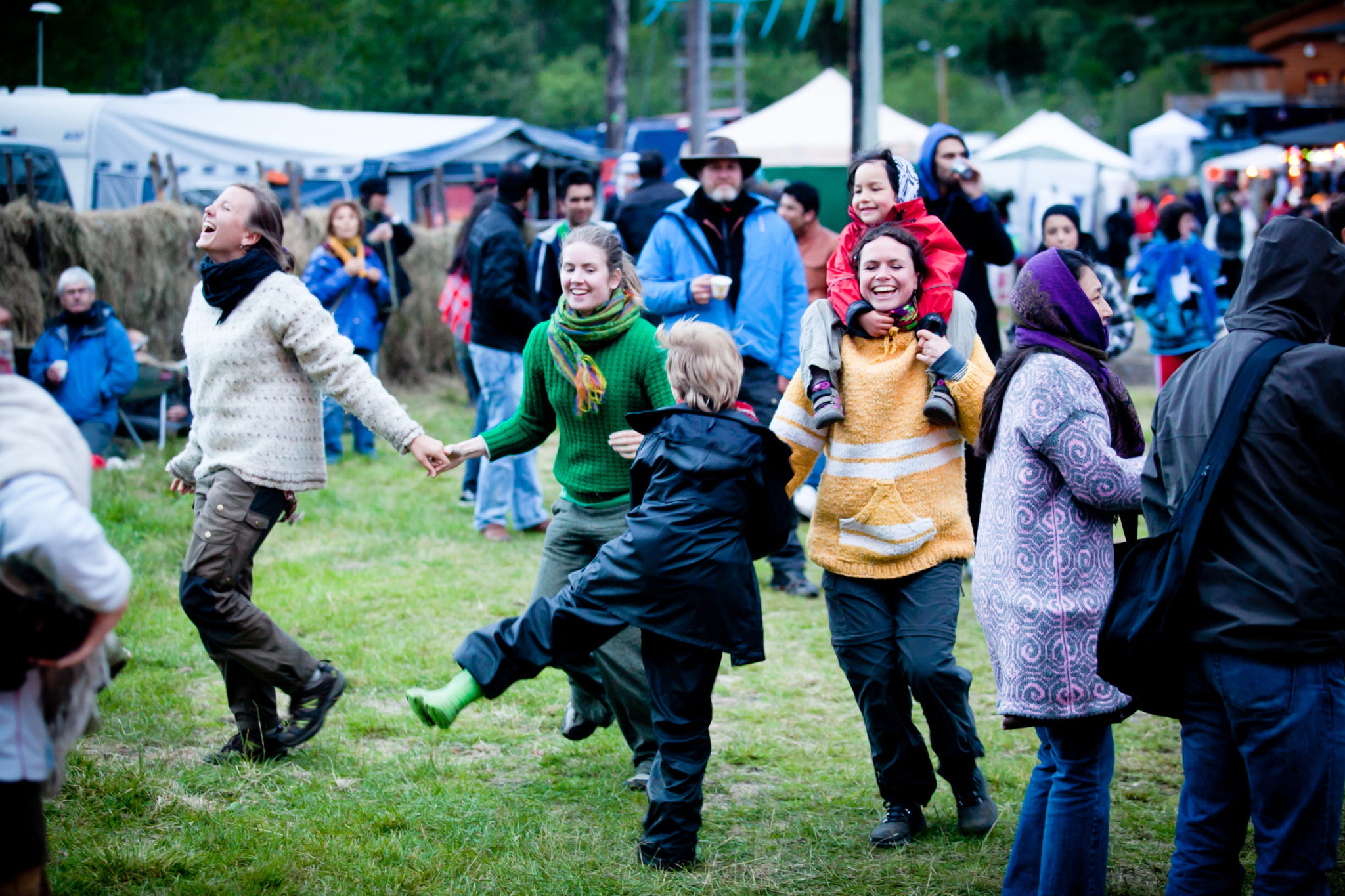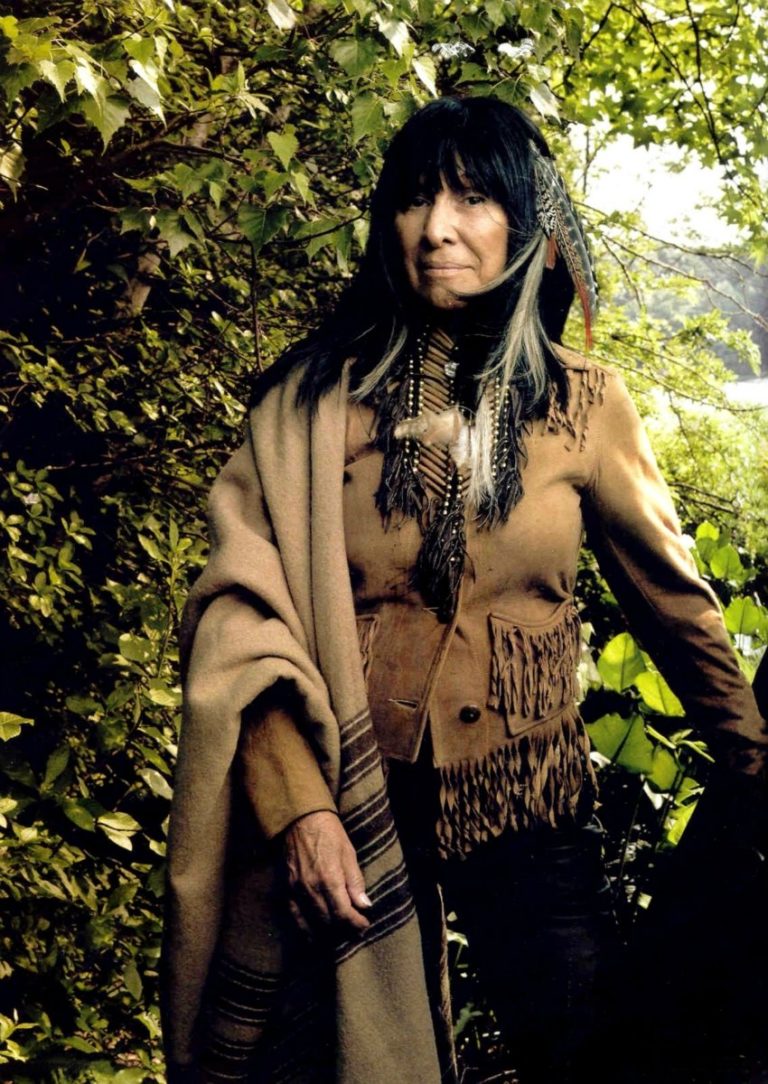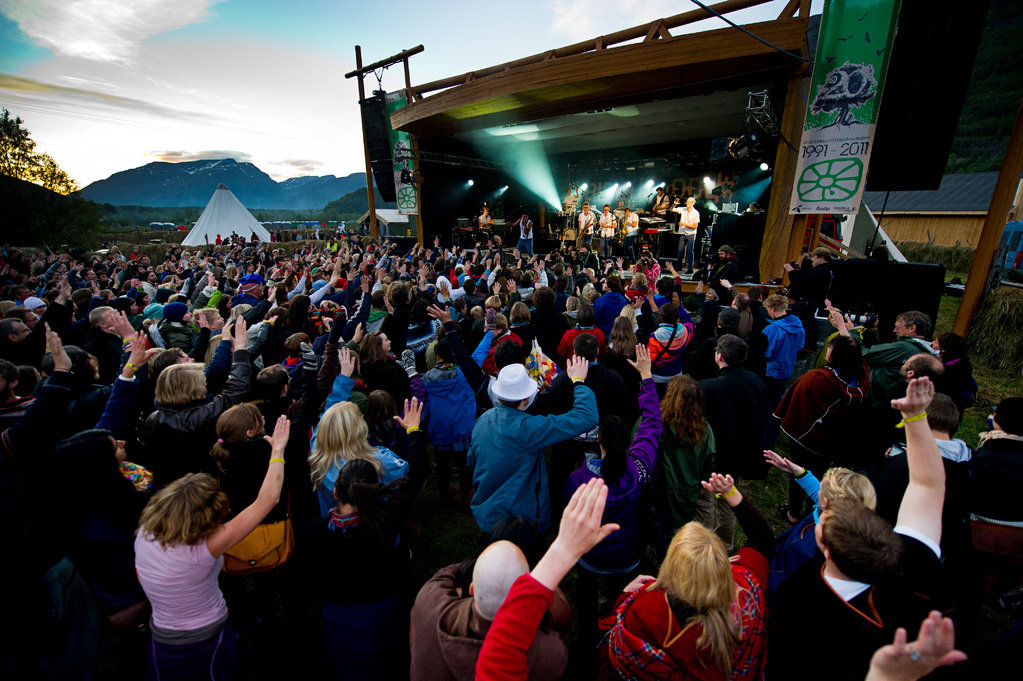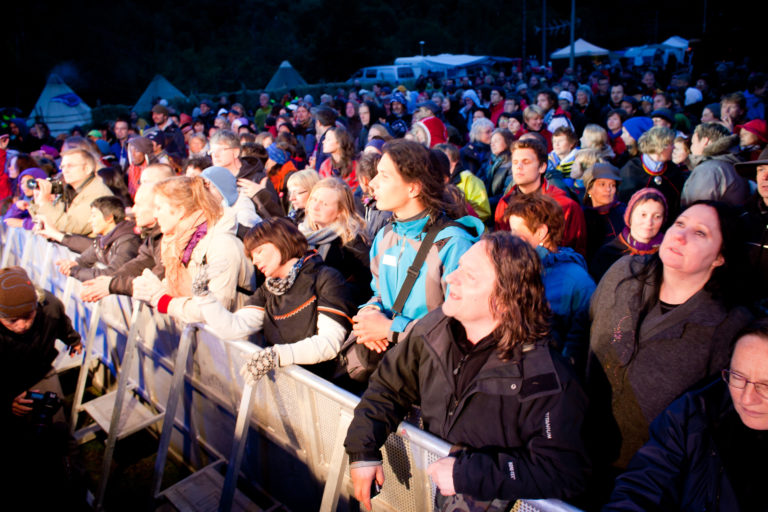The second week in July is time for Riddu Riđđu again. Riddu is making the most of the opportunity to promote the Sami language, which is a central part of the festival. There is always a huge variety of great music from all over the Sami region and from the furthest corners of the globe; there is theatre, art, seminars and of course Riddu Siida, a social hub within the festival area. Add to this a large dose of party atmosphere, fun and the chance to get together with fellow music lovers!
Northern people of the year
True to tradition, Riddu Riđđu dedicates special attention to a people from the northern regions. In 2019, this was the Inuit from Nunavut on Greenland. Concerts, films, courses and seminars presented the culture and history of the Inuit peoples.
Indigenous people come from all over the world
Buffy Sainte-Marie, the famous Canadian indigenous folk artist, is an old friend of the Riddu, and always attracts a large audience. Over the years, New Zealand, Algeria, Greenland, Australia, Papua New Guinea, Japan and numerous artists from Russia, Canada and the United States have been present. They all represent ethnic minorities that fight for the survival of their cultures and languages. The sense of community between first nations across the world is strong, and this is a good chance for indigenous peoples to support each other.
Musical highlights from Sápmi
Riddu Riđđu always treats us to plenty of highlights from the musical scene in the Sami region. Elin Kåven from Karasjok sings from the album she released this winter. Violet Road is a rock band from Kåfjord which has several radio hits behind it. Lovisa Negga gives us her very first song in the Lule Sami language. Ailu Valle from Utsjok in Finland raps in Sami. The popular Kautokeino group Sančuari sings melodious Joik rock.
Riddu Siida is where we meet
Riddu Riđđu’s place to hang is Riddu Siida. This is a mingling area, where there is always something going on. A turf hut, a yurt, a tjum and several lavvo tents, all traditional indigenous dwellings, provide a venue for courses, cultural events, spontaneous concerts and a chance to taste traditional and innovative cuisines
Stage, gallery, seminars, literature
It’s not all about music. Beaivváš Sámi Našunálateáhter, the Sami national theatre, is a frequent guest showing theatre in Sami language, and free theatre groups, stand-up comedians and other drama expressions are part of the festival. There is also a seminar programme where various topics concerning indigenous peoples are discussed. Riddu also has an art programme, with new artists within painting and sculpture exhibiting every year.
Tent life
There aren’t many hotel rooms in Manndalen, which means that most of the audience has to sleep in tents in the festival fields – but most people enjoy this! It doesn’t get dark, so it’s a great chance to stay up into the small hours around the camp fire in a lavvo. A rain shower is always a possibility, but the sheltered position of Manndalen behind the Lyngen Alps gives it a generally dry climate.
More Riddu info
Have a look at the Riddu website, it’s being added to all the time.
The local tourist board, Visit Lyngen, has plenty of info on their website.
After the festival
Manndalen is a rural area which is famous for its buckets and pails, so it’s worth spending a little time here. In Manndalen Husflidslag’s Grenebua shop, the ‘rug shed’, you can study Sea Sami handicrafts. The ‘grene’ are large woven wool rugs and blankets that have a tradition going back thousands of years. ‘Bonkos’ mittens are so warm that they are used by explorers travelling to the North Pole! The ‘Sjithælveteskåken’ is a simple house that was rebuilt after the war from salvaged planks. When the government wanted the owner to pay for the materials, he angrily told them that they could just come and take his miserable shack. You can also take a walk up to the summer pastures and go and see the goats!





